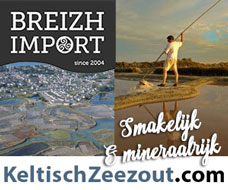Mike
Installeer de app
How to install the app on iOS
Follow along with the video below to see how to install our site as a web app on your home screen.
Opmerking: This feature may not be available in some browsers.
Je gebruikt een verouderde webbrowser. Het kan mogelijk deze of andere websites niet correct weergeven.
Het is raadzaam om je webbrowser te upgraden of een browser zoals Microsoft Edge of Google Chrome te gebruiken.
Het is raadzaam om je webbrowser te upgraden of een browser zoals Microsoft Edge of Google Chrome te gebruiken.
Palestina - Israël
- Onderwerp starter 100leven
- Startdatum
Mike
Mike
Mike
Mike
Zij zijn niet zoals wij.
Mike
Mike
Mike
Mike
Mike
This is literally fake news. Anyone who believes it is either willfully ignorant or a Zionist.
The source of this image is not Hamas, and they have made no statements related to the fires in Jerusalem and Israel. It doesn’t appear on any official Hamas or Al-Qassam channels or websites.
It was posted by a random Telegram account. I’ve included the official Telegram links, and there’s nothing related to this image.
Mike
The source of this image is not Hamas, and they have made no statements related to the fires in Jerusalem and Israel. It doesn’t appear on any official Hamas or Al-Qassam channels or websites.
It was posted by a random Telegram account. I’ve included the official Telegram links, and there’s nothing related to this image.
Mike
Mike
Israelis and Zionists claim that Palestinians are behind the fires in Jerusalem and across Israel. However, the reality is simple, as shown by today’s fire map of the entire region:
1. The extreme weather conditions.
2. The highly flammable European pine trees—non-native species that Israel planted extensively.
European pine trees—especially the Aleppo pine (Pinus halepensis)—are widely planted in Israel and are a major component of many of the forests.
➤ Aleppo pine is the most common tree in Israeli forests, heavily planted by the Jewish National Fund (JNF) since the early 20th century for reforestation.
➤ These pines are not native to most parts of Israel and were introduced on a large scale, often replacing native Mediterranean oak and maquis ecosystems.
➤ They are highly flammable, with resinous wood and dense needle litter, making them a major wildfire hazard, especially in hot, dry, and windy conditions.
➤ Forests like those in Jerusalem Hills, Mount Carmel, and Ben Shemen contain large stands of Aleppo pine, many of which have suffered repeated wildfire damage.
The elevated fire risk in Israel today, April 30, 2025, is due to a combination of extreme weather conditions:
➤ High temperatures: Temperatures have soared to between 36°C and 39°C (97°F to 102°F) in central and southern Israel, including the Shfela region and the Negev.
➤ Strong winds: Gusty winds are rapidly spreading fires, complicating containment efforts.
➤ Low humidity: Dry air increases flammability, making vegetation more susceptible to ignition.
These factors have led to massive wildfires near Jerusalem, prompting evacuations and a national emergency declaration.
Mike
Mike
Mike
Mike
Mike
Mike
As the sun sets and firefighting aircraft halt operations, massive wildfires continue to spread in Sha’ar HaGai and beyond, now threatening the Jerusalem Forest due to shifting winds.
Nine settlements have been evacuated, 10,000 settlers have fled their homes, and evacuations are ongoing.
Nataf has been cleared, Eshtaol residents allowed to return, while Ramat Raziel, Giv’at Ye’arim, and Kisalon prepare for possible evacuation.
These are the largest fires since the occupation of Palestine.
Mike
Tel Aviv and other major occupied cities have canceled “Independence Day” celebrations—marking the Palestinian Nakba—due to widespread wildfires.
Israeli occupation police announced the arrest of a Palestinian from Umm Tuba, east of Jerusalem, on suspicion of attempting to start a fire in the south of the occupied city.
The wildfires have reached Israeli military bases west of occupied Jerusalem, while a heavy sandstorm is hitting the south of occupied Palestine.
National Security Council: So far, it has been agreed that 3 "Kandahir" aircraft from Italy and Croatia will arrive in Israel as soon as possible.
Source: @tamerqdh / QudsN
Mike
Mike
Forum statistieken






